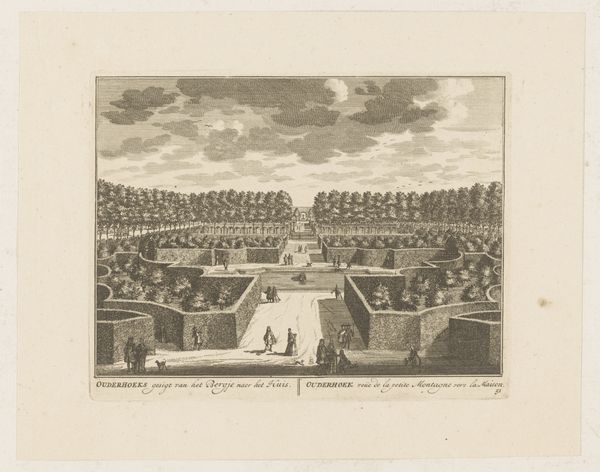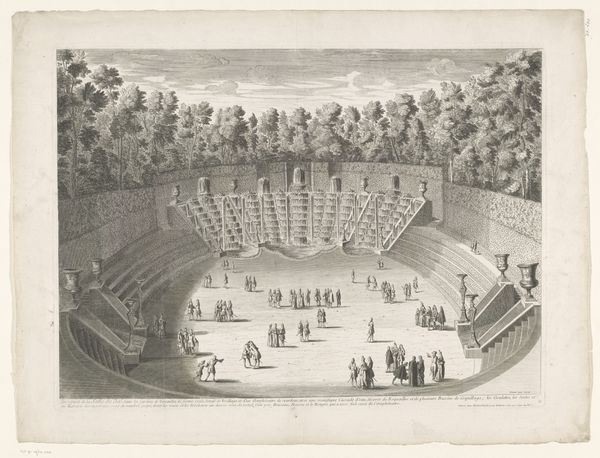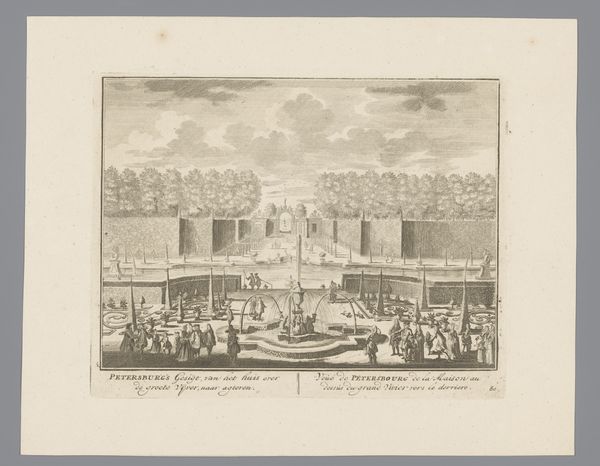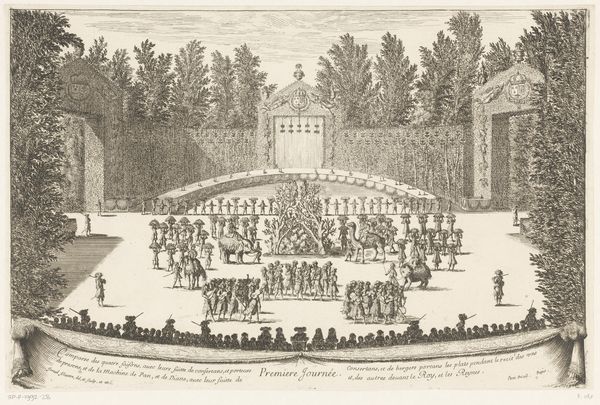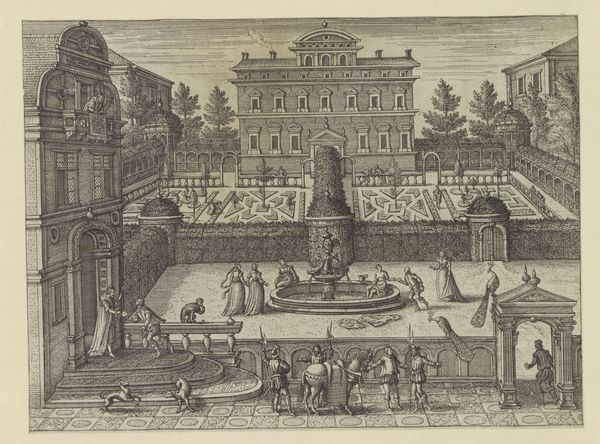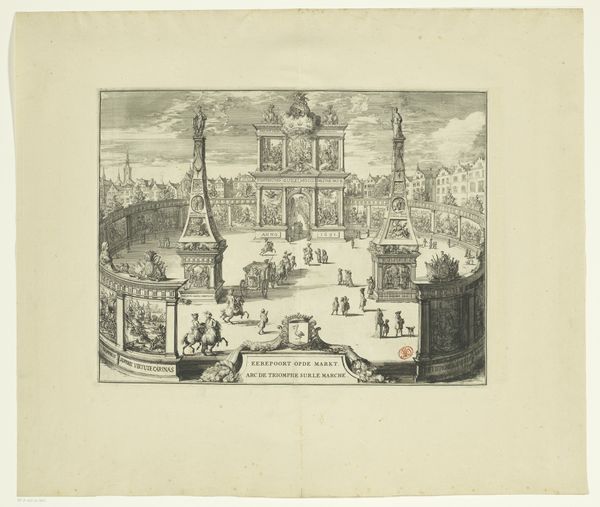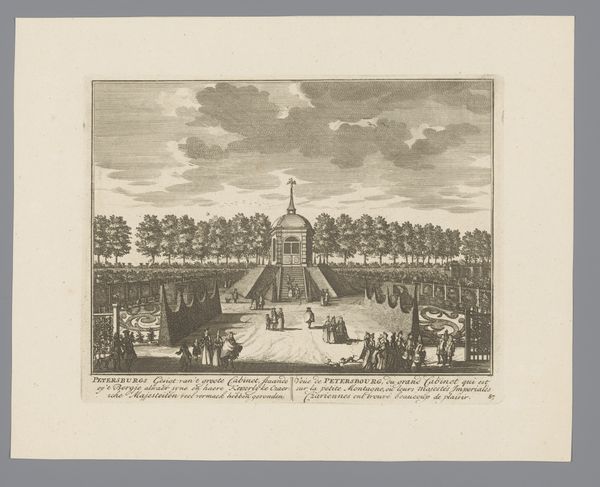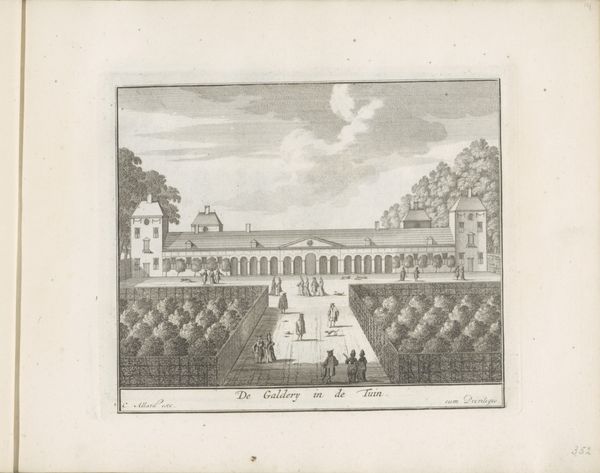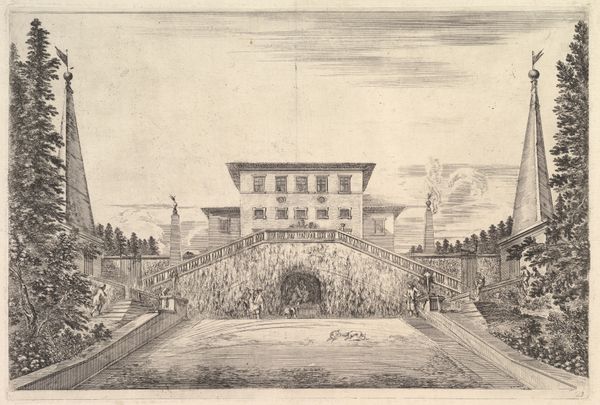
#
garden
#
aged paper
#
toned paper
#
ink paper printed
#
parchment
#
old engraving style
#
personal sketchbook
#
illustrative and welcoming imagery
#
sketchbook drawing
#
watercolour illustration
#
cartoon carciture
Dimensions: height 286 mm, width 410 mm
Copyright: Rijks Museum: Open Domain
Editor: So, here we have "View of the Juliusspital and its gardens in Würzburg," a 1740 print by Johann August Corvinus, currently at the Rijksmuseum. It looks so orderly, like a stage set. What’s striking is how it presents this vision of institutional power, carefully manicured. How do you interpret this work? Curator: Indeed. The meticulous detail is key. This isn’t just a rendering of a hospital and its grounds; it’s a statement about social order and control in the 18th century. The Juliusspital was more than just a place of healing; it was a powerful institution tied to the Catholic Church. Consider how the garden isn't just decorative—it is carefully planned and controlled. This reflects the controlling social attitudes of the ruling classes, doesn’t it? How do you think the building itself contributes to this sense of authority? Editor: The building is immense. You see all those windows lined up—it projects such strength and scale, suggesting a lot of people and money were involved! Does that connect to ideas around public health? Curator: Exactly. It demonstrates control of not only the body through medicine, but control over civic society through power displays of architectural achievement. Remember the period. The Enlightenment. Everything aspires to order, reason. Who benefited from this image? The wealthy? The ruling elite? Or the sick and the poor? Editor: It seems it would really reinforce the power of those who ran the hospital and controlled civic resources. It gives them a justification for their actions, which doesn't always represent everyone involved, such as people needing care. Curator: Precisely. Art often reinforces existing power structures and ideas about governance, regardless of how they might harm individuals within the group. The history of medicine and its architecture is a social narrative, far more than just functional. Editor: That’s such a valuable point. I had been drawn in by the lovely architecture, but seeing it as an emblem of broader control shifts my perspective. Thank you. Curator: The layering of aesthetics, architecture, and socio-historical contexts certainly adds depth to any artwork analysis. I appreciate your reflections, too.
Comments
No comments
Be the first to comment and join the conversation on the ultimate creative platform.
